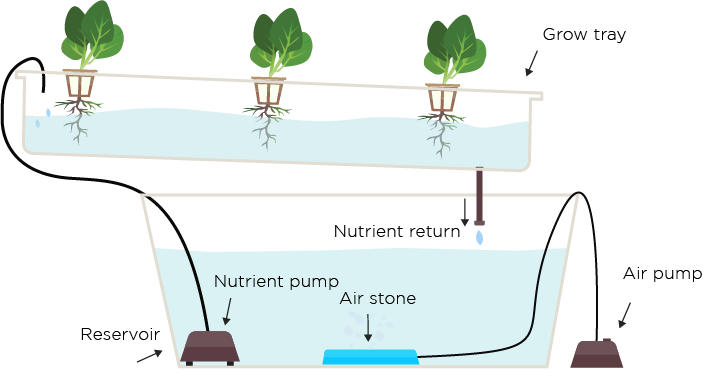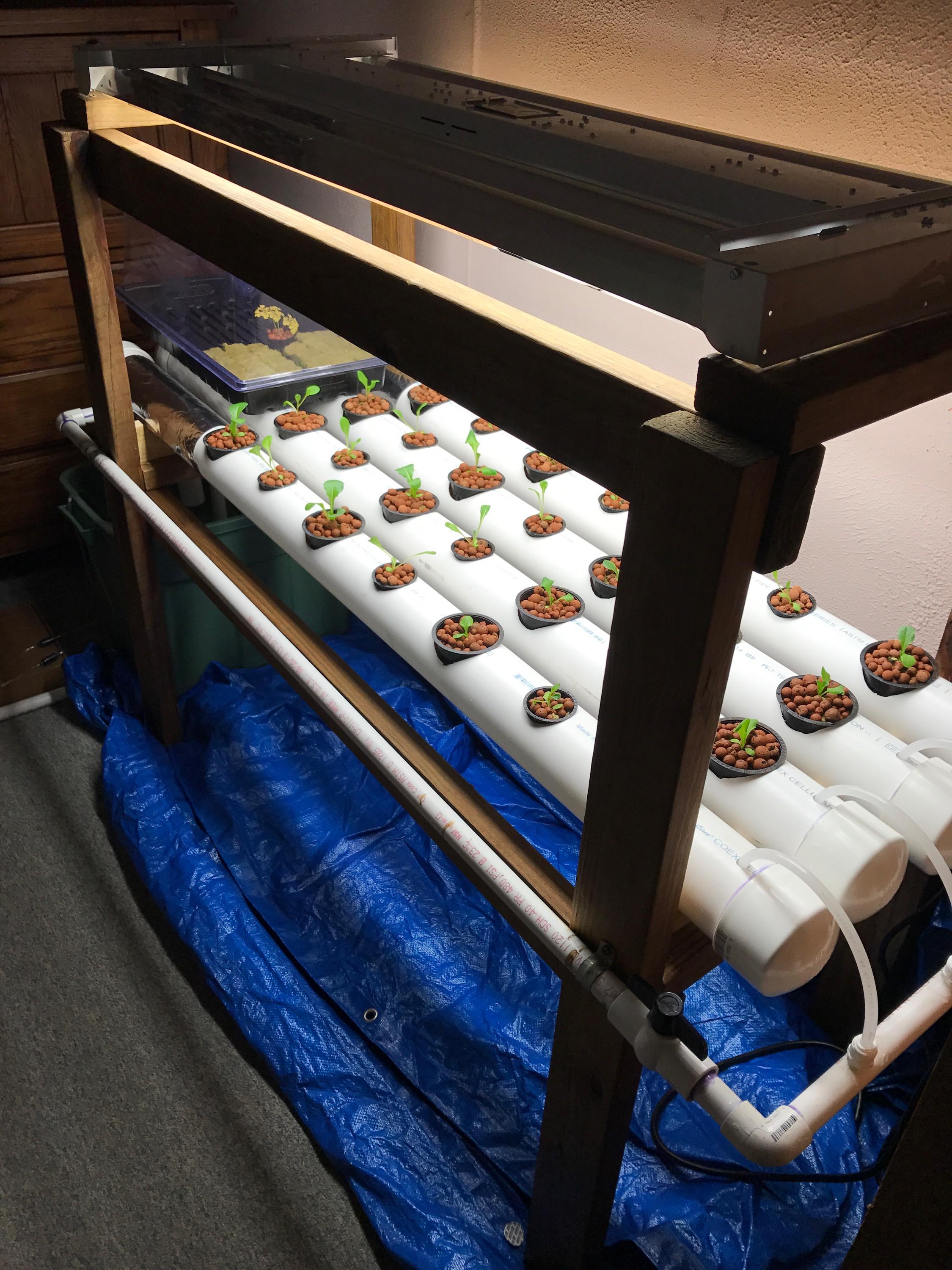Nutrient Film Technique

The Nutrient Film Technique (NFT) is a hydroponic growing method. Typically used in domestic grows with an advantage of being easily expandable in size.
As with all hydroponics, your plants are fed by nutrient-infused water.
Your seedlings germinate either in starter cubes, or small baskets containing an inert growing media. The root system uses this media as anchorage to support the rest of the plant.
the Nutrient film technique
Check out this article if you want to know how hydroponics works but if you know enough to get by and are digging deeper then you've come to the right article. The Nutrient Film Technique (NFT) is one of many different hydroponic systems used to grow plants in water. If you'd like an overview of each, have a read of this article summarising the types of hydroponics systems in digestible chunks

You’ll need a large reservoir holding your nutrient solution, the larger reservoirs are easier to balance nutritionally. Into this, you’ll place an airstone or two attached to an air pump via tubing. This will consistently throw air bubbles into the reservoir. Bubbling air through the nutrient solution increases oxygen diffusion rates and is more efficient than having a single air-to-solution interface which equals happy plants.
Next, install a water pump and tubing so you can pump your oxygenated nutrient solution up to your plants in the channel above. You can either leave the pump on continuously or sync it with a timer for specified feedings.
The most important thing to monitor is that enough of your plant’s roots system is being exposed to the air to avoid root disease - if there's an anaerobic environment, the roots will die and you'll breed an unwanted, uncontrollable colony of bacteria and mold that will very quickly consume all that they lay their flagella on. If you do experience it, then brewing your own microbe tea is the best way to cure root rot.
The channel is positioned at a gradient so the gravity-aided water can run to the bottom, which is what makes the NFT system become so flexible in its usage. You can add multiple channels either above or to the side of the original channel, connecting them to one another in a continuous flow. The recommended slope gradient is for every 30-40 inches in length, the channel drops one inch. There needs to be a balance in the gradient, so the water flows through at a suitable rate and making sure it doesn’t get damned by the thick mesh of roots.
Holes within the channel are cut out and baskets places in them. The plants are planted in the inert material and the roots grow through the basket and into the flowing nutrient solution in the bottom of the channel below. The spacing between the plants is determined by the size and type of plants being grown. If you have a large setup, you’ll need to an extra pump halfway through your channel system so each plant gets the required nutrients it needs to grow.
As the nutrient solution reaches the end of the channel, it drains back into the reservoir and begins the cycle once more.

Have you seen our other Articles on hydroponics?
The Basics Of Hydroponics | The Kratky Method | Types Of Hydroponics | Deep Water Culture | The Drip System | The Wick System | Lighting In Hydroponics | The Ebb And Flow System | Nutrient Film Technique | Nutrients For Plant Growth | Ventilation For Hydroponics | Growing Media Used In Hydroponics | Hydroponics | The Best Way To Cure Root Rot | How To Choose A Grow Tent | The Best LED Grow Lights | Everything You Need To Know About Nutrient Lockout | The Best Air Pumps For Hydroponics | The Best PH Meters For Hydroponics | What Mom Never Told You About The GH Dual Diaphragm Air Pump |
Terms & Conditions
Subscribe
Report
My comments